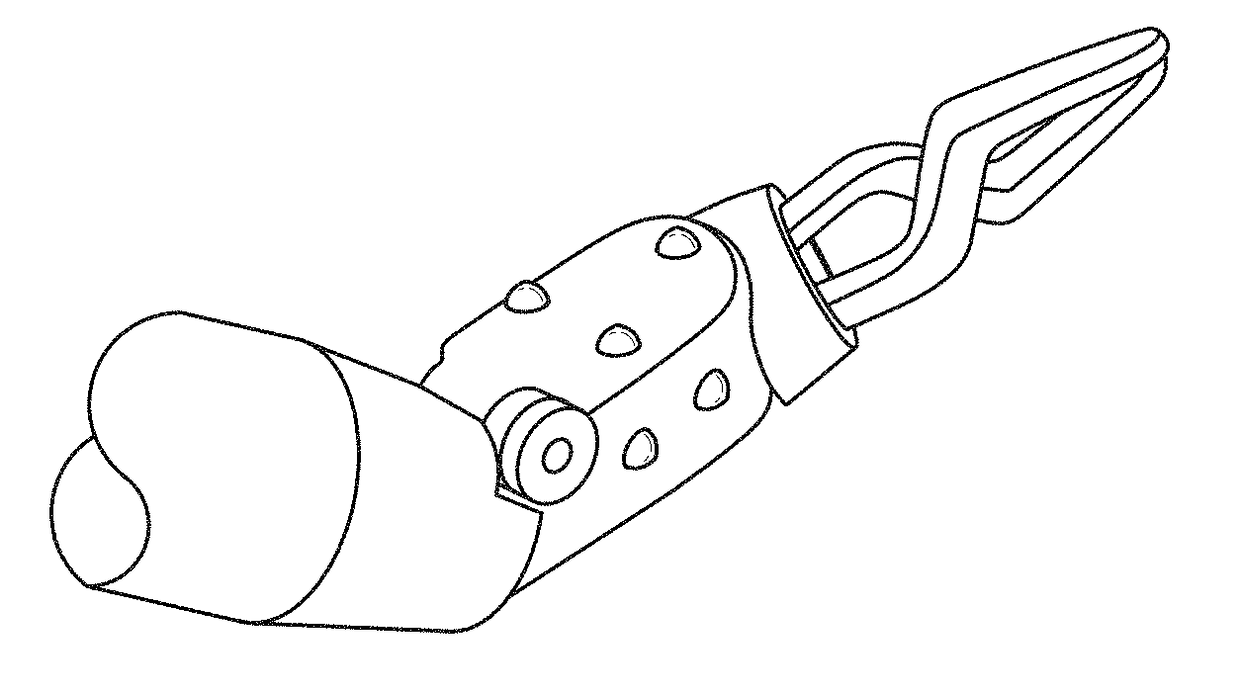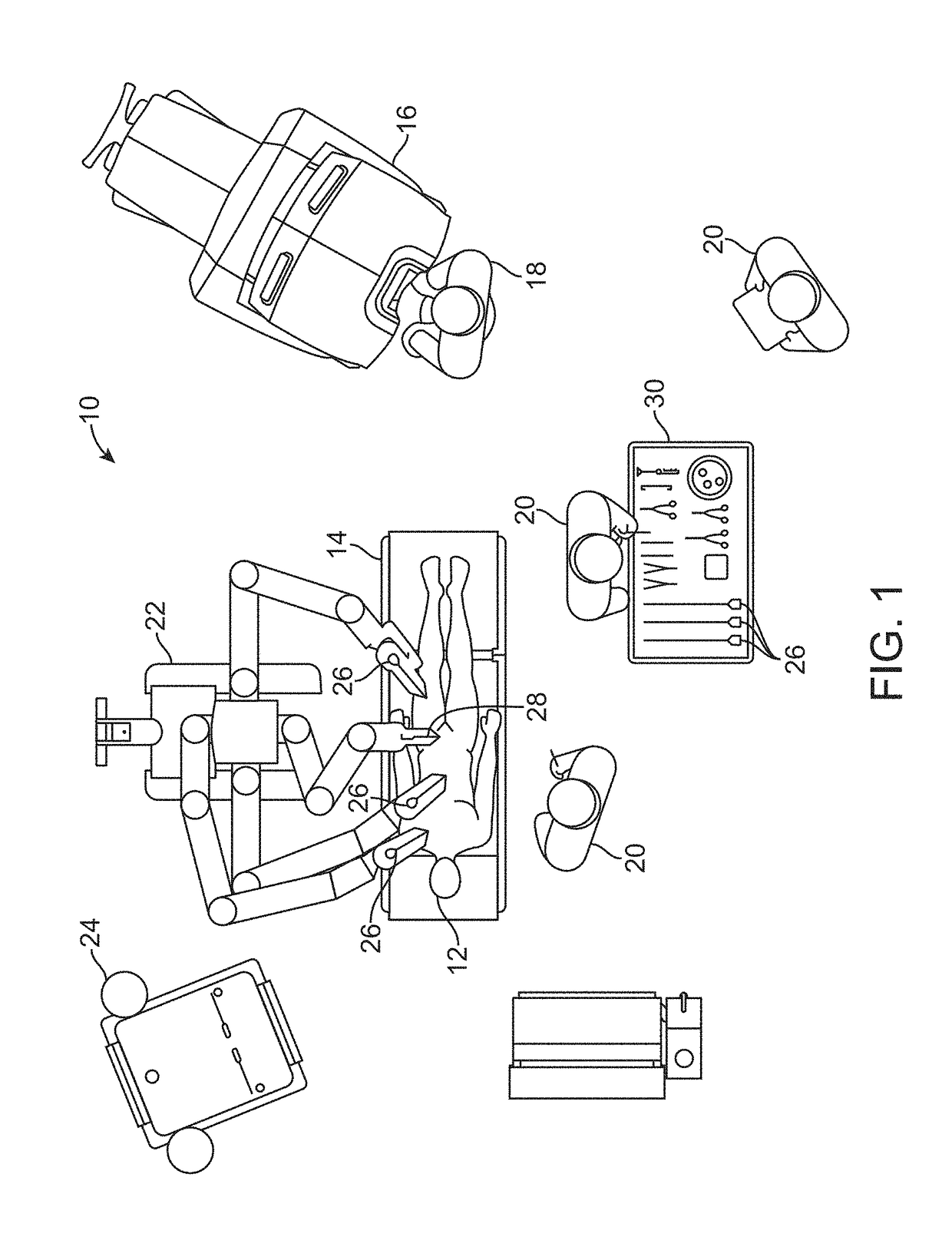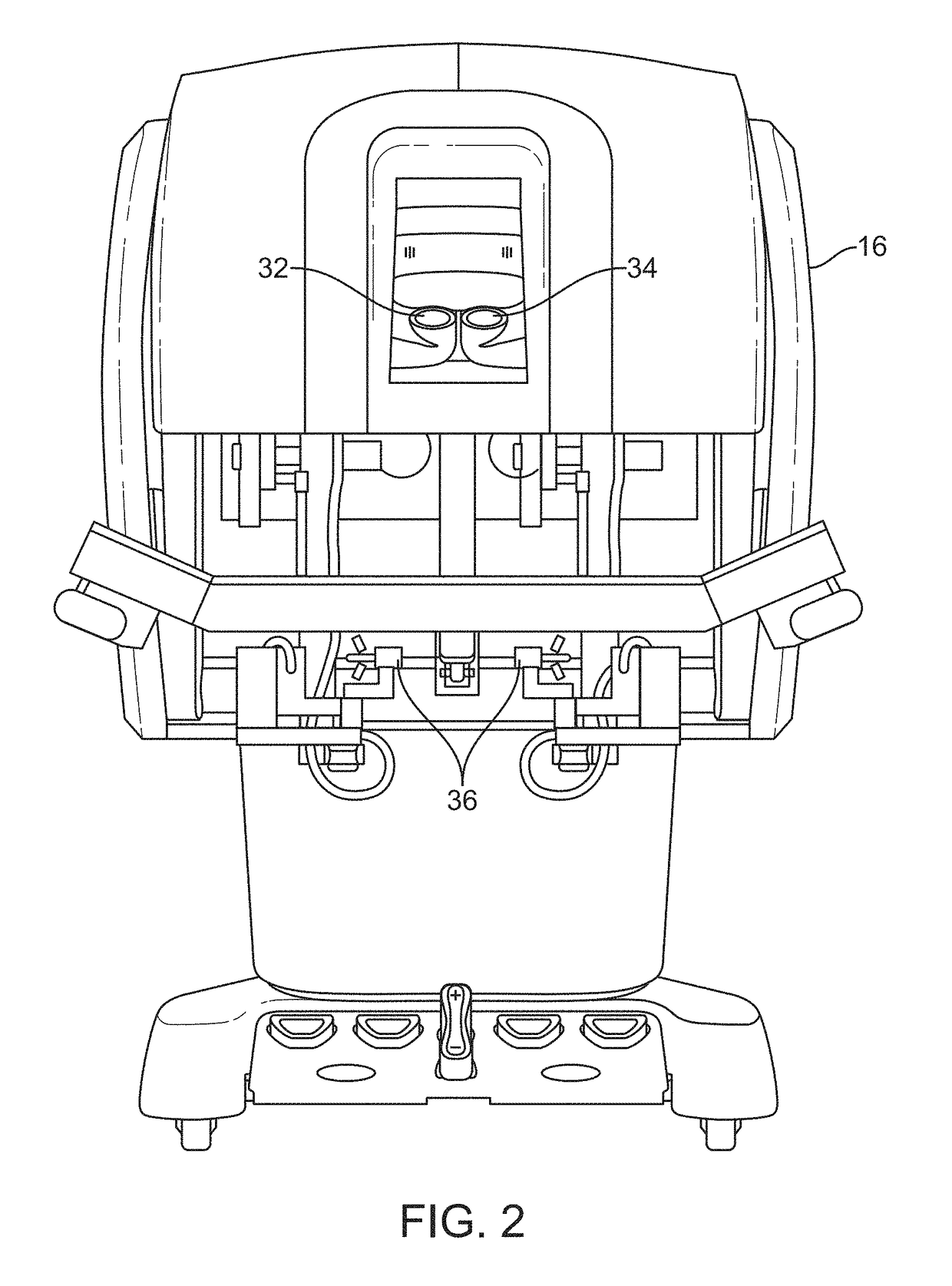Configuration marker design and detection for instrument tracking
a technology of configuration markers and positioning markers, applied in the field of configuration marker design and detection of instrument tracking, can solve the problems of affecting accuracy, kinematics estimated pose may not be very accurate, end effectors may become difficult to see, etc., and achieve accurate and reliable tool tracking, accurate and reliable image processing, and effective and reliable image-derived tool pose estimation
- Summary
- Abstract
- Description
- Claims
- Application Information
AI Technical Summary
Benefits of technology
Problems solved by technology
Method used
Image
Examples
Embodiment Construction
[0075]In accordance with embodiments, improved methods and systems are provided for three-dimensional (3-D) object tracking using image-derived data from one or more object located reference features. Such methods and systems can be particularly advantageous when employed for tracking surgical tools during minimally-invasive robotic surgery.
[0076]The following terms are used herein. A “feature” is a general term used to denote whatever useful information can be extracted from an image. A “primitive feature” is used to denote small or simple features that can be extracted locally from an image (e.g., a salient blob, a small circle, a dot, a bar, etc.). A primitive feature is in contrast with a“composite feature”, where multiple primitive features are used to create a composite feature. A “marker” is some discernible (typically visible) pattern used for locating an object or computing the pose of an object. A marker can be composed of multiple primitive features. A “tool state” is a g...
PUM
 Login to View More
Login to View More Abstract
Description
Claims
Application Information
 Login to View More
Login to View More - R&D
- Intellectual Property
- Life Sciences
- Materials
- Tech Scout
- Unparalleled Data Quality
- Higher Quality Content
- 60% Fewer Hallucinations
Browse by: Latest US Patents, China's latest patents, Technical Efficacy Thesaurus, Application Domain, Technology Topic, Popular Technical Reports.
© 2025 PatSnap. All rights reserved.Legal|Privacy policy|Modern Slavery Act Transparency Statement|Sitemap|About US| Contact US: help@patsnap.com



